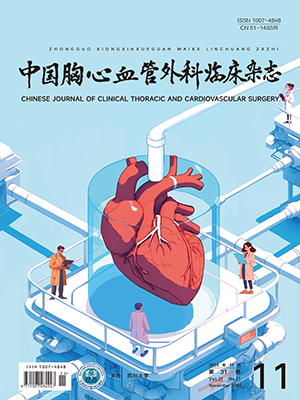| 1. |
Bray F, Ferlay J, Soerjomataram I, et al. Global cancer statistics 2018: GLOBOCAN estimates of incidence and mortality worldwide for 36 cancers in 185 countries. CA Cancer J Clin, 2018, 68(6): 394-424.
|
| 2. |
Torre LA, Trabert B, DeSantis CE, et al. Ovarian cancer statistics, 2018. CA Cancer J Clin, 2018, 68(4): 284-296.
|
| 3. |
杨鑫, 何虹, 郭婷, 等. 胃癌术后化疗期患者心理痛苦度及其影响因素的纵向研究. 护理学杂志, 2019, 34(12): 79-82.
|
| 4. |
Pisu M, Azuero A, Halilova KI, et al. Most impactful factors on the health-related quality of life of a geriatric population with cancer. Cancer, 2018, 124(3): 596-605.
|
| 5. |
奇伟静, 胡洁, 李来有. 2018. V1 版《NCCN 癌症临床指南: 心理痛苦的处理》解读. 中国全科医学, 2018, 21(15): 1765-1768.
|
| 6. |
Riba MB, Donovan KA, Andersen B, et al. Distress management, version 3. 2019, NCCN clinical practice guidelines in oncology. J Natl Compr Canc Netw, 2019, 17(10): 1229-1249.
|
| 7. |
张叶宁. 心理痛苦温度计中文版在中国癌症患者中应用的信度效度研究. 北京大学, 2010.
|
| 8. |
Krebs J, Wasner S, Egloffstein S, et al. Resilience, fear of progression and psychosocial distress in patients with breast cancer and gynecological tumors seeking a second opinion. Psychother Psychosom Med Psychol, 2019, 69(7): 293-300.
|
| 9. |
林航, 吕艳花, 沈乐园. 癌症患者初次诊断心理痛苦现状及影响因素分析. 护理实践与研究, 2020, 17(9): 20-22.
|
| 10. |
陈卓园园, 韩兴平, 刘英, 等. 住院癌症患者心理痛苦、生活质量现状及相关性分析. 齐鲁护理杂志, 2020, 26(17): 13-17.
|
| 11. |
康小云, 杨群草, 王浩楠, 等. 胃癌术后患者心理痛苦状况及影响因素分析. 广西医科大学学报, 2019, 36(10): 1677-1681.
|
| 12. |
徐达, 闫晓峦, 刘佳明, 等. 单发与多发结直肠癌肝转移患者肝切除术后预后分析. 中华肝胆外科杂志, 2020, 26(7): 503-507.
|
| 13. |
李梦媛, 梅孟雪, 刘超, 等. 住院治疗对恶性肿瘤患者心理痛苦的影响. 临床医药文献电子杂志, 2020, 7(84): 59-60.
|
| 14. |
陈慧禅, 陈国姣. 胸部手术患者围术期呼吸肌训练对预后的影响. 国际护理学杂志, 2019, 38(5): 691-694.
|
| 15. |
汤玉梅, 李芳芳, 王丽, 等. 呼吸功能锻炼对老年腹部手术后肺部感染及免疫功能的影响. 中华医院感染学杂志, 2017, 27(19): 4468-4471.
|
| 16. |
王娇英. CNP模式对慢性支气管炎急性发作患者的影响. 实用中西医结合临床, 2020, 20(11): 137-138, 140.
|
| 17. |
沈颖, 张静, 卜庆云, 等. 乳腺癌患者心理痛苦水平及其影响因素的纵向研究. 中国护理管理, 2018, 18(5): 617-622.
|
| 18. |
秦洁. 心理痛苦温度计在癌症患者中的应用进展. 当代护士, 2019, 26(5): 15-17.
|
| 19. |
Calderón C, Jimenez-Fonseca P, Jara C, et al. Comparison of coping, psychological distress, and level of functioning in patients with gastric and colorectal cancer before adjuvant chemotherapy. J Pain Symptom Manage, 2018, 56(3): 399-405.
|
| 20. |
陈洁, 陈锦妹, 赵晓慧, 等. 肿瘤放疗患者心理痛苦评估及其影响因素分析. 中华放射肿瘤学杂志, 2019, 28(10): 758-761.
|
| 21. |
孙蓉, 高华, 赵婧莎, 等. 癌症患者疾病应对方式和疾病获益感的关系: 中介变量和调节变量的作用. 临床与病理杂志, 2019, 39(1): 134-141.
|
| 22. |
江一铃, 洪静芳, 余永美. 农村晚期肺癌化疗患者心理困扰与应对方式的调查研究. 重庆医学, 2019, 48(3): 451-455.
|
| 23. |
程绪平, 陈萍, 冯丹, 等. NCCN 指南 2018 心理痛苦管理第二版对我国癌症患者心理痛苦管理实践的启示. 中华肺部疾病杂志(电子版), 2019, 12(4): 536-538.
|




